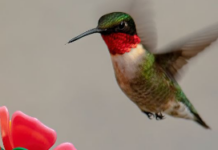MANHATTAN, Kan. – A six-state project to study the influence on farming and the environment creates a link between water, nutrients, pests and farming practice data.
Raj Khosla, Ph.D., the head of K-State’s Department of Agronomy, is co-leading a five-year $10 million USDA National Institute for Food and Agriculture grant. This grant, which covers the Colorado River Basin, looks at ways farmers can help meet the administration’s 2050 goal to increase food production by 40% while decreasing inputs (chemicals/nutrients) by 50%.
“That’s a tall order,” Khosla said in a release. “Given our track-record we can cross the 40% mark (of increased production) in the next 40 crop seasons, but doing that with 50% less inputs, is going to be challenging.”
Before joining K-State, Khosala served in the soil and crop sciences department at Colorado State University. Khosla holds a Ph.D. and master’s degree in soil fertility & crop management and soil physics, from Virginia Polytechnic Institute and State University — Virginia Tech.
Khosla, who began as K-State’s department head for agronomy in January, is a globally recognized authority on precision agriculture. He is the founder and past president of the International Society of Precision Agriculture.
His research program used remote sensing and other geo-spatial tools to enhance agricultural production, increase resource efficiency, and enhance profitability and sustainability of managed agro-ecosystems.
According to Khosla, a crop of irrigated corn takes about 2 acre feet of water to produce. In 2050, he said, farmers would have to produce 40% more corn than they are producing today with 1 acre foot less of water.
The $10 million grant that he will co-lead with Elia Scudiero, a research agronomist at the University of California-Riverside, will use new technologies to mine data from farmer’s fields. They will take that information and discover how to apply water, fertilizer, pesticides and other inputs in a more targeted manner.
The area being studied – the Colorado River Basin – touches seven states and includes 1,450 miles. Part of the study also contains a 17-mile international boundary between Arizona and Mexico.
The Colorado River is a major renewable water supply in the southwestern U.S. According to K-State, nearly two-thirds of the water flowing in the river is used for irrigation; the other one-third supplies water to urban areas.
Khosla said increasing food supply while reducing inputs is an “uphill task.”
“This is where the 5 R’s of precision agriculture come into play,” he said. “We are learning more about how to apply the right input, at the right time, at the right place, in the right amount and the right manner.”
This USDA-NIFA grant should help determine the data needed to employ precision agriculture most effectively in farmer’s fields and help translate data into decisions that the farmer can understand and make on their own.
“The idea is to keep the complexity related to data collection, processing, and complex analytics to ourselves,” Khosla said. “We want to deliver a simple, precise, reliable and automated solution to the farmer.”
Ernie Minton, dean of the K-State College of Agriculture and director of K-State Research and Extension, said projects like the one are critical for the future of agriculture.




